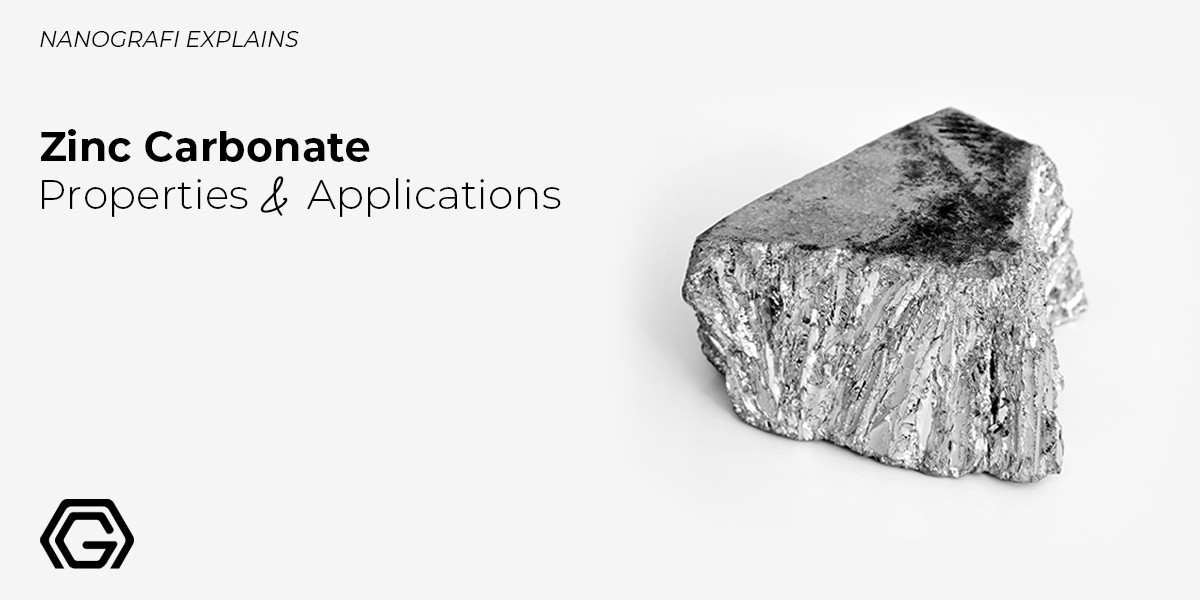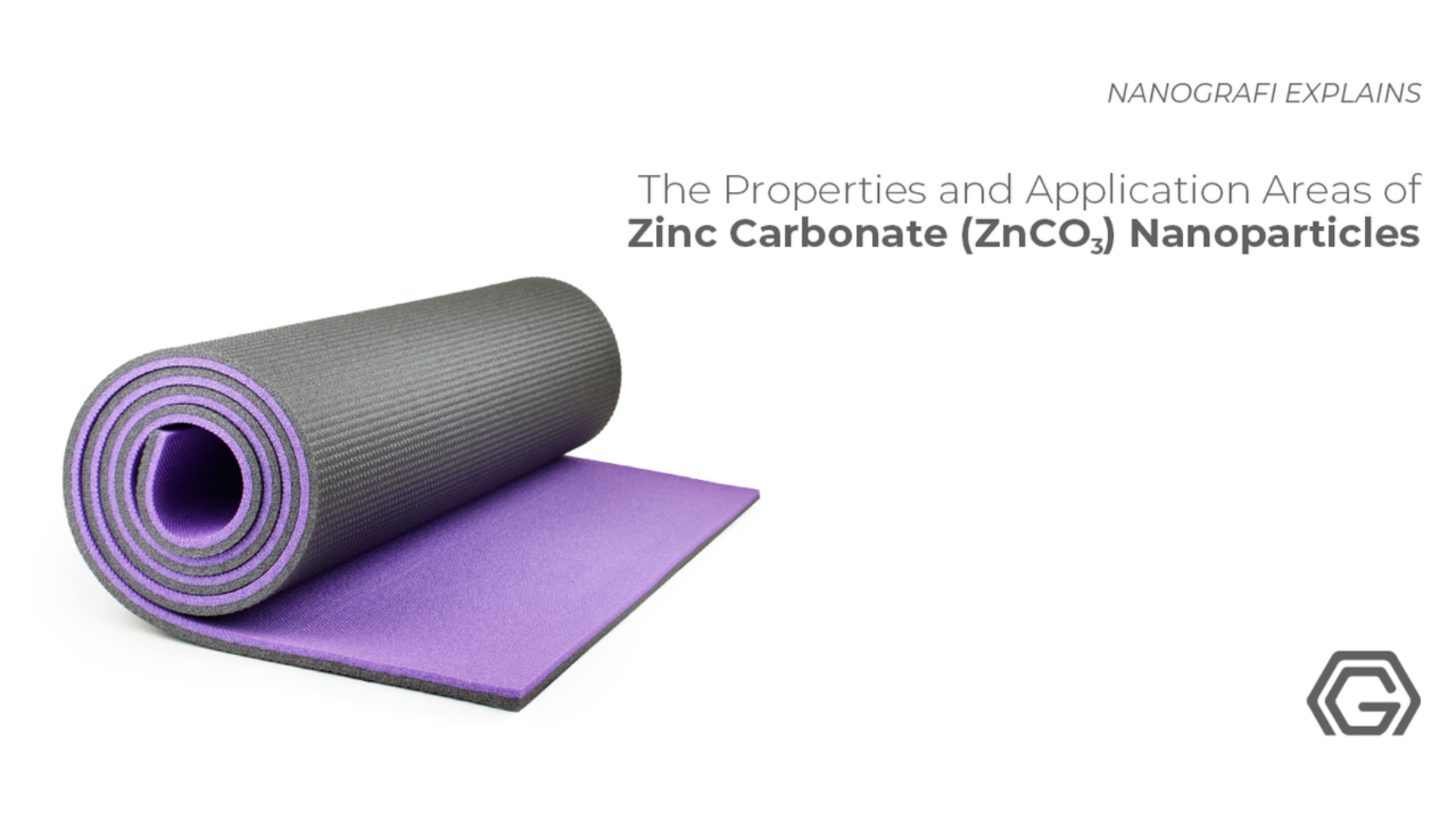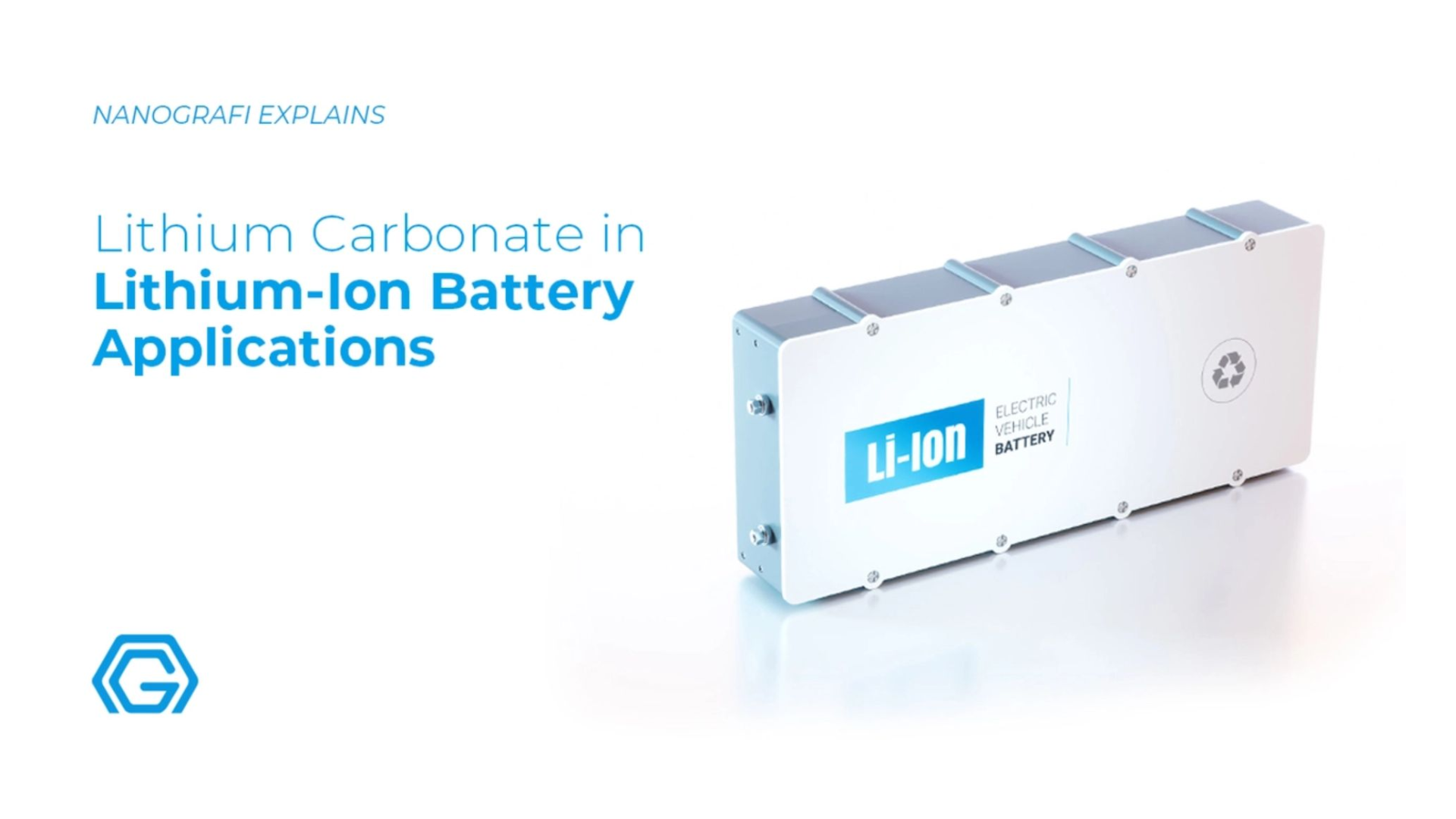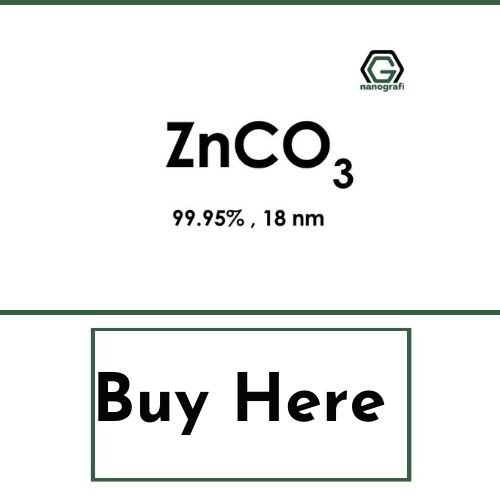Zinc Carbonate Properties and Applications
Zinc carbonate consists of white crystals which are insoluble in water but soluble in alkalis and numerous other acids. Basically, zinc carbonate is used for the production of creams and ointments.
In this post, we will introduce you in detail to all the components properties and uses of this chemical material.
Introduction
Zinc Carbonate is a colourless or white solid that is found in nature forming the Smithsonite mineral, in which it can be alone or with other elements such as cobalt or copper, which give it violet or green colour respectively. ZnCO3 is almost insoluble in water, but it dissolves easily in dilute acids since the carbonate ion in an acidic medium forms carbonic acid (H2CO3), which is then converted into CO2 gas and water. It is used as an antiseptic in animal wounds and is sometimes supplied in the diet to avoid diseases caused by zinc deficiency. It serves to delay the burning of certain fibres, plastics and rubber when they come into contact with the fire. It allows the separation of toxic arsenic minerals from other rocks safely. It has been used in toothpaste to recover dentin in teeth that have been whitening.
Structure of Zinc Carbonate
ZnCO3 consists of a Zn 2+ cation and a CO3 2- anion. The carbon in the carbonate ion has an oxidation state of +4. This ion has a flat structure with the three oxygen atoms surrounding the carbon atom.
Production of Zinc Carbonate
Generally, it is formed as a secondary mineral in Zinc mining deposits, for the Zinc carbonate to form these deposits must present oxidation zones. It can also be found in sedimentary deposits and directly oxidized products.
It is obtained by grinding the Smithsonite mineral, formerly called zinc spar.
It can also be prepared by mixing a sodium carbonate solution with zinc salt, such as zinc sulfate. Sodium sulfate remains dissolved, and zinc carbonate precipitates:
ZnSO4 + Na2CO3 → ZnCO3 + Na2SO4
Properties of Zinc Carbonate
The main properties of Zinc Carbonate given below:
- Molecular weight: 125.4 g/mol
- Physical state: Colorless solid or crystalline white. Rhombic crystals.
- Melting point: At 140 ºC it decomposes without melting.
- Solubility: Practically insoluble in water: 0.000091 g/100 g of H2O at 20 °C. Soluble in dilute acids, alkalis and ammonium salt solutions. Insoluble in ammonia, alcohol and acetone.
- Density: 4.398 g/cm3 at 20 °C.
Chemical Properties of Zinc Carbonate
It reacts with acids to form carbon dioxide:
ZnCO3 + 2H+ → Zn2+ + H2O + CO2
It dissolves in bases forming the hydroxide, which partially dissolves forming a zincate ion:
ZnCO3 + 2OH- → Zn(OH)2 + CO32-
Zn(OH)2 + H2O + OH → [Zn(OH)3(H2O)]
It is not flammable. When heated to decomposition, it produces zinc oxide and carbon dioxide but can emit carbon monoxide (CO).
ZnCO3 + heat → ZnO + CO2
Advantages of Zinc Carbonate
- Zinc carbonate processes are highly environmentally friendly and efficient, due to its low content of heavy metals (5PPM or less). Guaranteeing environmental protection, and additionally, benefits in economic terms.
- Through production equipment, zinc carbonate can be efficiently worked with materials such as stainless steel and copper, guaranteeing that the products do not contain impurities when they go to the market.
- The hot air drying method can be used in order to ensure that the products do not contain uniformities when drying. The products in this range will have good fluidity, highly uniform fineness and specific high surfaces.
To get more information about Zinc Carbonate (ZnCO3),
you can read our blog post here.
Applications of Zinc Carbonate
Zinc Carbonate has a lot of applications. The main ones are listed below:
In Veterinary Applications
It serves as an astringent, antiseptic, and topical wound protector in animals.
It also helps prevent diseases caused by zinc deficiency, which is why it is used as a supplement in the diet of some animals, provided that the amounts administered are within the standards established by health organizations.
Zinc carbonate is sometimes administered as a micronutrient to prevent disease in animals.
In Medical Treatments
This compound allows for obtaining some pharmaceutical products. It is applied to inflamed skin in the form of a powder or lotion.
As a Flame Retardant
It is used as a fireproof filler for rubbers and plastics that are exposed to high temperatures.
It protects textile fibres from fire. In the case of cotton textiles, it is applied to the fabric along with some alkali. This directly attacks the primary hydroxyl groups (–CH2OH) of the cellulose and converts them into sodium cellulose (–CH2ONa).
The breakdown of cellulose bonds by the alkali favours a greater penetrability of the chains of the compact cellulosic structure, which is why more ZnCO3 manages to enter the amorphous zone of this, and its dispersion is facilitated.
Some cotton fabrics may contain ZnCO3 in their fibres to make them fire-resistant. As a result, the amount of flammable gas that could be produced by fire is reduced.
To Separate Dangerous Minerals from Arsenic
Methods of separating arsenic minerals from sulfide rocks (such as galena, chalcopyrite, and pyrite) have been tested using ZnCO3. The mineral-rich in arsenic must be separated from the others because this element is a very toxic and poisonous pollutant for living beings.
To achieve this, the mixture of the ground rocks is treated with a solution of zinc sulfate and sodium carbonate at a pH of 7.5-9.0 and a xanthate compound.
The effectiveness of the formula is attributed to the formation of small ZnCO3 particles on the surface of the arsenopyrite, making it hydrophilic (related to water), so it cannot adhere to air bubbles and cannot float, precipitating and separating of the other minerals.
In Dental Treatments
Certain toothpaste based on zinc carbonate and hydroxyapatite nanocrystals are applied regularly to the denture. It reduces hypersensitivity more effectively than those based on fluorine.
ZnCO3 and hydroxyapatite nanocrystals have a size, shape, chemical composition and crystallinity similar to that of dentin so that the dentinal tubules can be closed with the application of these materials.
ZnCO3 -hydroxyapatite nanoparticles have been successfully tested to decrease sensitivity in whitened teeth. This type of toothpaste is useful after teeth whitening processes.
In Obtaining other Zinc Compounds
Zinc carbonate has been used to obtain hydrophobic zinc borate nanostructures of the formula 3ZnO.3B2O3.3.5H2O. This material can be used as a flame retardant additive in polymers, wood and textiles.
If you are interested in the applications of battery equipments,
you can read our blog post here.
In The Recovery of Zinc from Residual Effluents
Synthetic waters rich in zinc ions discarded by electroplating processes can be treated by fluidized bed technology using sodium carbonate to precipitate ZnCO3.
By precipitating the Zn2+ in the form of the carbonate, its concentration decreases, the solid obtained is filtered, and the waters can be disposed of safely. The precipitated ZnCO3is of high purity.
Other Uses
- It allows for preparing other zinc compounds. It is used in cosmetics. It serves as a pigment and is used in the manufacture of porcelain, ceramics and pottery.
- They are usually applied to products that contain transparent gums and EVA-type foaming agents with refraction indices similar to rubber.
- Regarding branches of medicines, some components of
Zinc carbonate is usually applied in treatments for patients with skin problems. - They are applied in light and astringent latex products. Carbonate is also used as a raw material for the production of rayon, a compound used in the field of chemical fertilizers and pesticides. Furthermore, Zinc carbonate is also used in the production of some catalysts.
- Zinc carbonate is a chemical that reacts with H2S to form the ZnS, a more stable and soluble component used to process oil drilling—allowing that at the moment of sludge suspension, no other component is affected after the addition of carbonate in the sludge. This component serves to remove most of the H2S contamination and corrosion during this process.
- It eliminates traces of sulfur found in oil and gas wells.
- It also acts as a corrosion inhibitor.
- Zinc carbonate components are also applied for the
creation and production of rubber soles, products that are made with
plastic rubbers, rubber plates,
tires of all kinds (especially those for motorcycles), belts, elastic bands, accessories for pipes, Zinc stearate, ZPT, among other materials.
Protection
Wash your hands
After handling this substance, wash your hands with plenty of water. Take off contaminated clothing and sterilize them before reuse. During the handling of the substance, it is recommended to use a ventilation source to avoid accidents.
Protection
For the eyes use specialized chemical safety goggles. For the skin, it is recommended to use specialized suits for skin protection and hand gloves.
Storage
Store this substance in tightly sealed or tightly closed containers that the place is highly dry and avoids humidity or extreme heat.
Liquid Spills
If the substance spills, it is recommended to clean the spilled areas with water, then dry and apply a cleaning product or disinfectant to the floor.
Respirator
It is important that the place where this substance is handled is equipped with respirators for workers in the event of a leak or fire emergency.
First Aid in Case of Misuse of Zinc Carbonate
When it is by inhalation
Take the intoxicated person to a place with fresh air as soon as possible. If the person does not breathe, apply CPR or oxygen, if available. Call an ambulance for the patient to receive immediate medical attention.
When it is by Intake
If the person who swallowed the zinc carbonate is conscious, give him 2 or 4 cups of milk or water. If the person is passed out or unconscious, call an ambulance for immediate medical attention.
Zinc Carbonate poisoning in the eyes
Flush the affected person's eyes with plenty of water for approximately 15 minutes, lifting the victim's upper and lower eyelids from time to time.
Zinc Carbonate poisoning on the skin
Apply neutral soap with plenty of water to the irritated areas and take the person to a health centre for treatment.
Conclusion
Thus, Zinc carbonate is an inorganic compound consisting of the elements zinc (Zn), carbon (C) and oxygen (O). Its chemical formula is ZnCO3. Zinc has an oxidation state of +2, carbon +4 and oxygen -2. It has many important applications found in medical, textile, and various other fields.
To get more information, you can visit Blografi.
References
https://www.sciencedirect.com/topics/pharmacology-toxicology-and-pharmaceutical-science/zinc-carbonate
http://www.docbrown.info/chemicals/ZnCO3.htm
https://byjus.com/chemistry/zinc-carbonate/
https://sciencing.com/uses-zinc-carbonate-7889200.html
Recent Posts
-
Advanced Materials for Unmanned Aerial Vehicle (UAV) Protection Against Laser
Consider a UAV on a critical mission, rendered inoperative by a sudden laser attack. With the increa …26th Jul 2024 -
Simulation and Modeling of Material Properties
Our world is composed of a dazzling array of materials, each with its own unique properties that dic …19th Jul 2024 -
Advanced Coatings for Superior Corrosion and Wear Resistance
Corrosion and wear pose significant challenges across various industries, leading to substantial eco …12th Jul 2024








